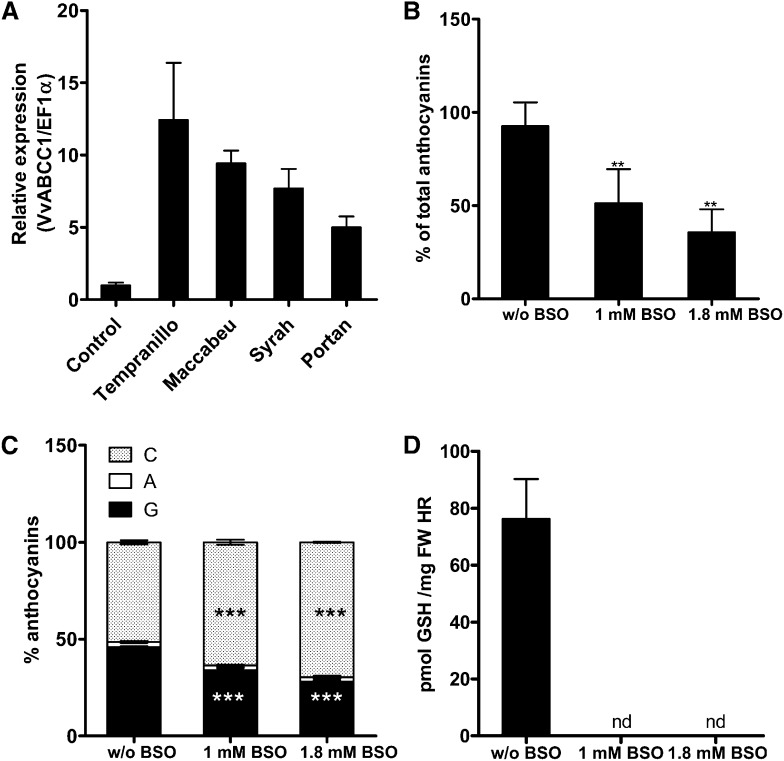Figure 7.
Effect of BSO on Anthocyanin Concentration and Profile in Tempranillo HRs.
(A) Quantitative real-time PCR expression profile of ABCC1 in HRs. Expression was tested in red HR of different cultivars. Control experiment: expression level in HR obtained with wild-type A. rhizogenes.
(B) Anthocyanin-producing Tempranillo HRs were grown on increasing concentrations of BSO, a compound that inhibits glutamyl-Cys synthetase, the enzyme responsible for the first step of GSH biosynthesis. Root samples were harvested 14 d after BSO treatment. Anthocyanin concentration was determined by HPLC. Increasing BSO concentration led to a decrease of the total anthocyanin concentration. The concentration of anthocyanins in roots grown on media without BSO was set as 100% (corresponding to 0.92 mg anthocyanins/g fresh weight HR). The data represent the means ± se of three independent experiments. Asterisks indicate statistical significance (Student’s t test; P < 0.01).
(C) Analysis of the anthocyanin profile in the root samples described in (B) shows that BSO affects mostly the glucosylated fraction. The data represent the means ± se of three independent experiments. Asterisks indicate statistical significance (Student’s t test; P < 0.001). C, coumaroylated; A, acylated; G, glucosylated anthocyanins.
(D) GSH concentration in red HRs subjected to various BSO concentrations. FW, fresh weight; nd, not detectable.

